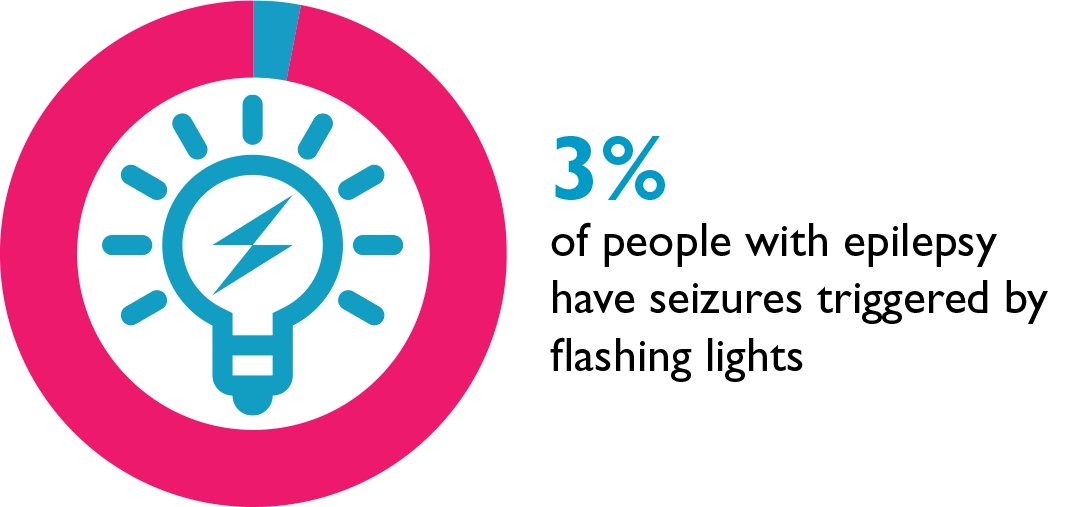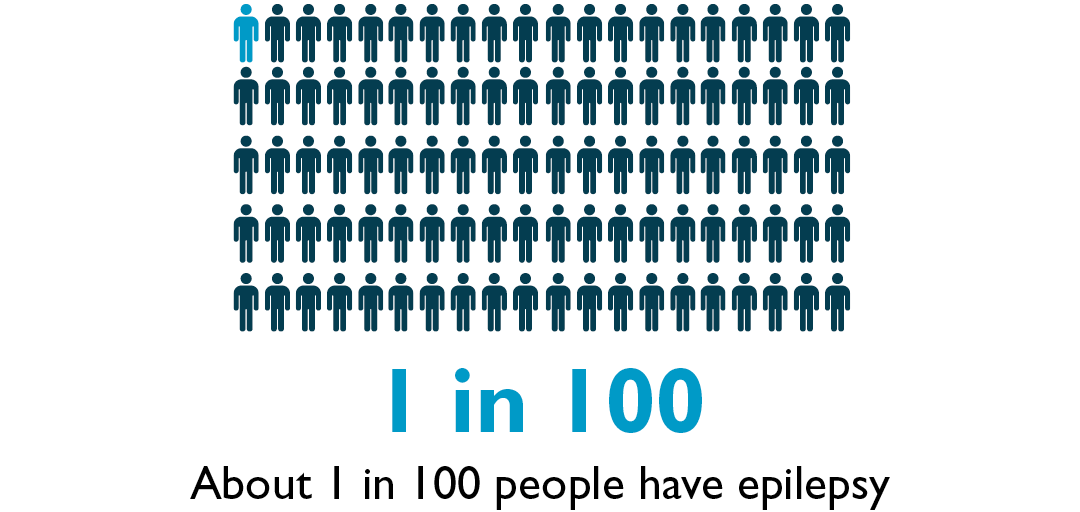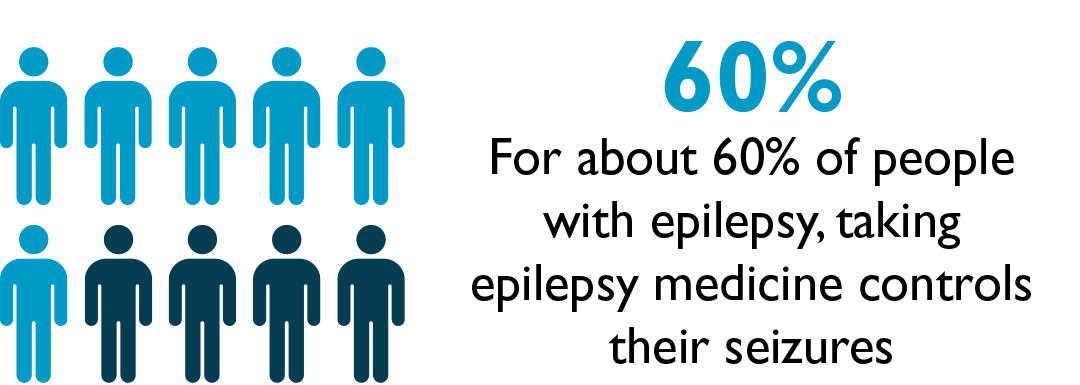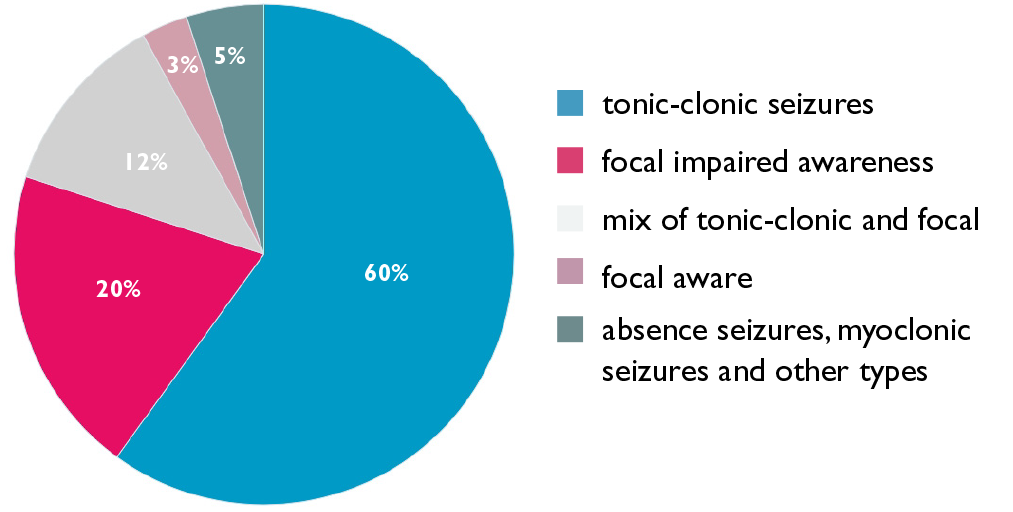Sometimes it is clear why epilepsy has developed. It could be due to:
In over half of all cases, however, there is no known cause for the condition.
There is more to epilepsy than having seizures. It can have an impact on memory, concentration and thinking skills. It can make people feel depressed and anxious and people may experience stigma and isolation.
Epilepsy is an invisible condition, and can be unpredictable. How people are affected by their epilepsy varies and often how someone feels and the symptoms they experience can come and go. The nature of an invisible and fluctuating condition means the person can look well and be fine for a period. On another day, or if they have a seizure, it might mean that they are not well enough to work.
Not all seizures are caused by electrical activity in the brain. For example dissociative seizures look a lot like epileptic seizures but they happen for psychological reasons.
Although flashing lights are often associated with epilepsy, it is myth that it affects everyone with epilepsy. Only 3 in 100 people with epilepsy have seizures triggered by flashing lights or high contrast patterns. This is known as photosensitive epilepsy.

That’s approximately 1 in 100 people. At some point, you may interview or employ someone with epilepsy.

More than half of people with epilepsy are seizure free, so may not need any adjustments to be made in the workplace.

Epilepsy can be diagnosed at any age and start for no obvious reason. This means an existing employee may develop the condition.

Electrical activity is happening in our brain all the time. A seizure happens when there is a sudden burst of intense electrical activity in the brain. This is often referred to as epileptic activity. It causes a temporary disruption to the way the brain normally works, and the messages in the brain get mixed up.
There are many different types of epileptic seizure. What happens during a seizure depends on where in the brain the epileptic activity starts and how it spreads within the brain.
There are many different types of epileptic seizure. Some seizures are not obvious. A seizure can cause somebody to lose consciousness, or they might stay aware of what is happening around them and have strange sensations, or movements they can’t control. Or the person might go stiff, fall to the floor and shake.
Some people only have one type of seizure and others have more than one type.

Find out more about what happens and what to expect for different types of seizures by clicking the buttons below.
For how to help someone who is having a seizure go to the First aid for seizures section.
There are many misconceptions about epilepsy. It will help you to support someone with epilepsy at work if you know the facts. Click below for the facts.
Fact
Many people with epilepsy can’t drive if they are still experiencing seizures. However, just having a diagnosis of epilepsy doesn’t always prevent a person from driving.
Whether they can drive or not depends on the types of seizures they have and when they last had one. There are different rules for people who have seizures only when asleep, when awake, or both.
The Epilepsy Action website has information about the regulations that apply to driving and epilepsy in the UK.
Fact
Computer screens are unlikely to be a seizure trigger. However, if there are flashing or flickering images, or some types of pattern on the screen, these could be a seizure trigger for someone with photosensitive epilepsy.
Photosensitive epilepsy is not as common as people think, it only affects 3% of people with epilepsy.
The Epilepsy Action website has more information about photosensitive epilepsy.
Fact
People with epilepsy can, and do, work in nursery nursing, teaching and other caring professions. Decisions on recruiting someone should be made on an individual basis. A failure to do so might amount to disability discrimination.
Fact
Some people with epilepsy can work safely in these situations. It all depends on how well their seizures are controlled, when and how their seizures affect them, and what safety measures can be put in place.
There is more to epilepsy than having seizures.
The impact of having a seizure is one thing but epilepsy affects lots of areas in life. This includes practical and emotional issues and some of these things can have an impact in the workplace. These issues don’t affect everyone who has epilepsy.
Practical issues include:
Emotional issues include:
Living with any long-term condition requires the person to manage all aspects of their condition. There will be appointments and prescriptions to remember, triggers to avoid and consideration over who to tell. The effort required might be invisible, but to live well with epilepsy the person will be making lots of decisions every day about how to manage their condition. They might be making a number of compromises and lifestyle changes that people without epilepsy won’t be aware of.
Some people with epilepsy find there are things that will make a seizure more likely. These are often called seizure triggers.
Seizure triggers differ from person to person. Some possible triggers include:
Most people with epilepsy are treated with epilepsy medicine, also known as anti-seizure medicine, anti-epileptic drugs or AEDs. Epilepsy medicines do not cure epilepsy but for about 60% of people taking them it stops their seizures.
To work properly, epilepsy medicines need to be taken every day and at the same time every day. When someone is first diagnosed with epilepsy it can take time to find the right AED and correct dose for them.
Epilepsy medicines can have a range of side-effects, such as:
Some people don’t get any side-effects from their epilepsy medicines, but some people do. It’s helpful to take this into account and consider the impact of specific side-effects when doing individual risk assessments.
There are other treatments for epilepsy. Some people have epilepsy brain surgery, some people have a vagus nerve stimulator (VNS) and ketogenic-type diets are an option for some people.
Find out from your employee what treatment they have for their epilepsy. The Epilepsy Action website has more detail about treatments for epilepsy.
The words people use can reinforce negative stereotypes of people with epilepsy, or it can challenge them.
Illness or disease | At Epilepsy Action we refer to epilepsy as a condition. Using the words illness or disease may imply it is something that can be caught, which is not true.
Epileptic | Saying this identifies a person as their medical condition, so it is more appropriate to say “a person with epilepsy.”
A victim or sufferer | These words imply that someone is helpless, so it is more appropriate to say “a person with epilepsy.”
Fit | The term ‘seizure’ or ‘epileptic seizure’ is preferred by many people, and it’s what we use. Some people with epilepsy choose to use the word ‘fit’. When talking to a person with epilepsy use the term that they prefer. For written records we suggest using seizure.
Brainstorming | Epilepsy Action is often asked about the use of this term. Our view is that it depends on how the word is used. If the word is being used to describe a meeting where people are suggesting ideas, then it is not offensive. However, using it to describe what happens in the brain during a seizure is something to avoid.
If you’d like to print the information on this webpage or see the information with references, download it here.